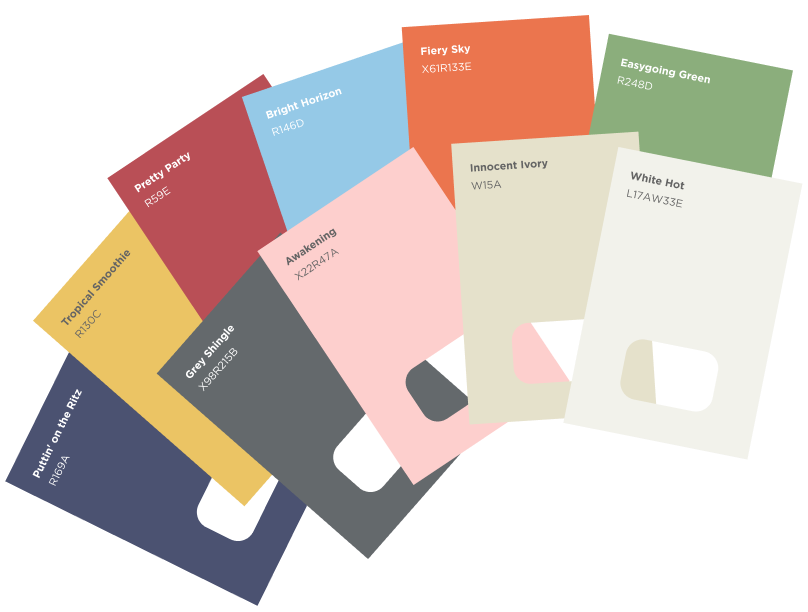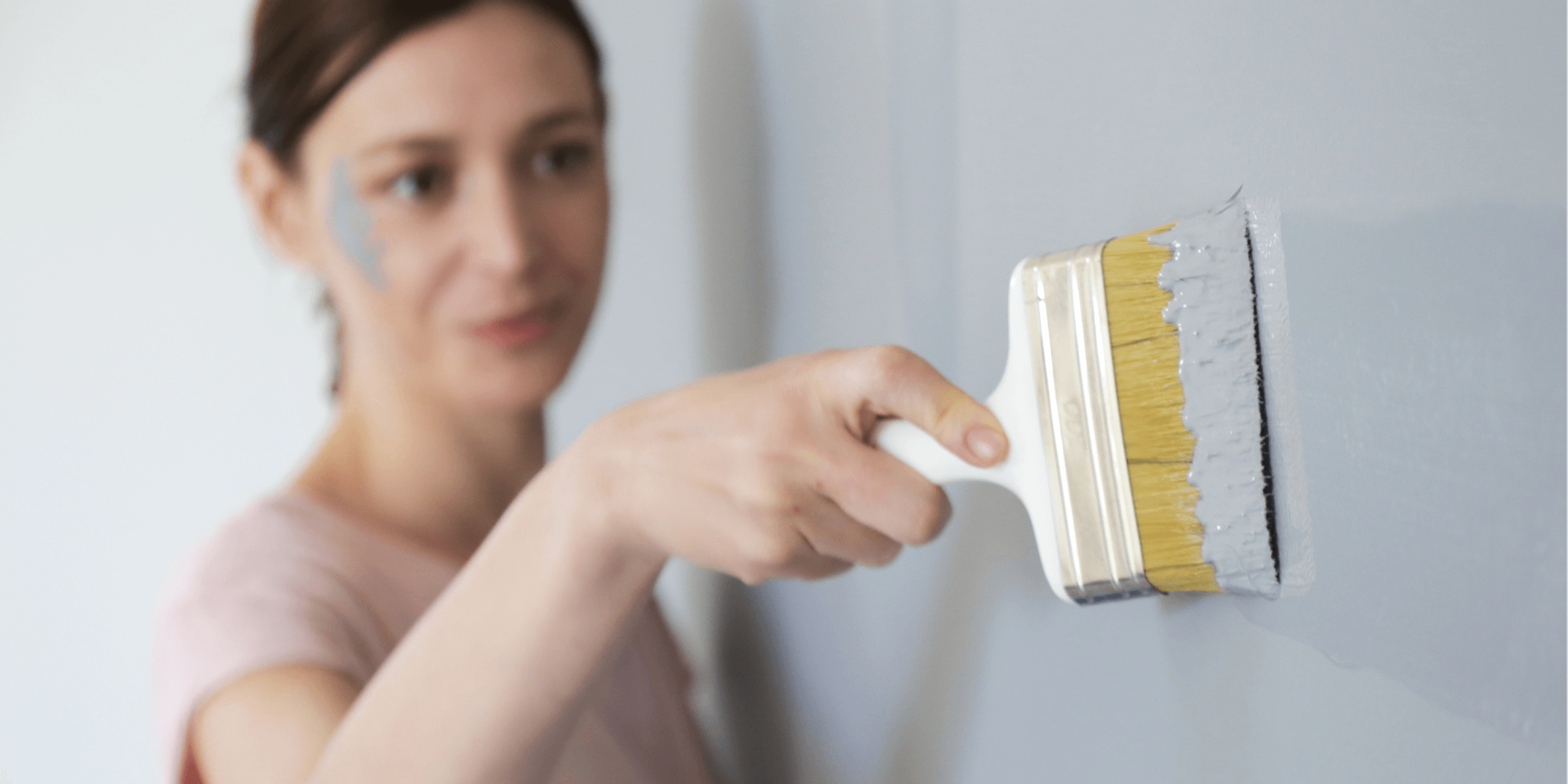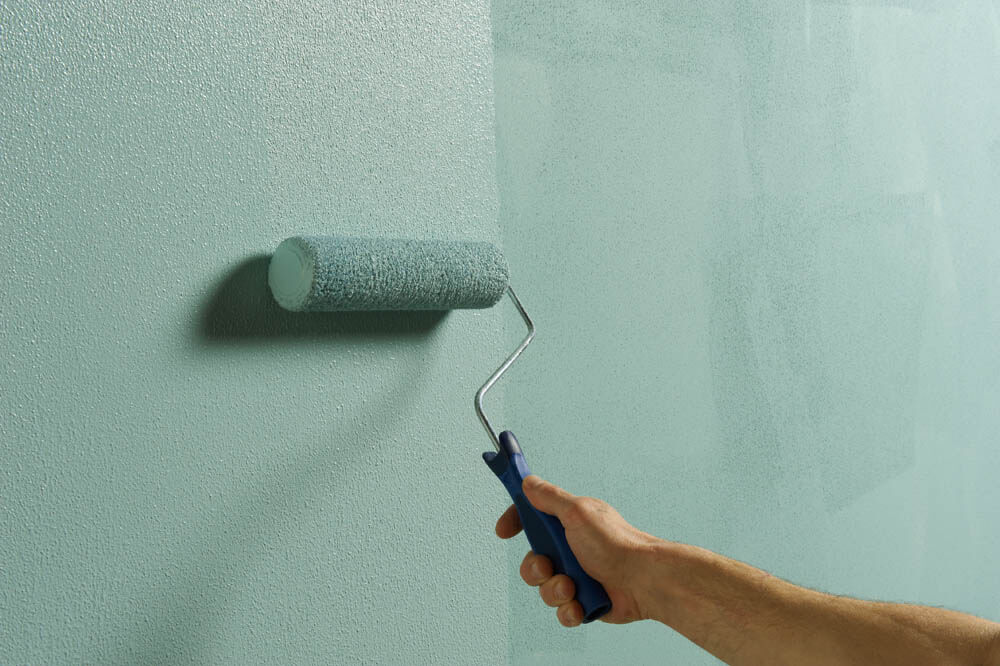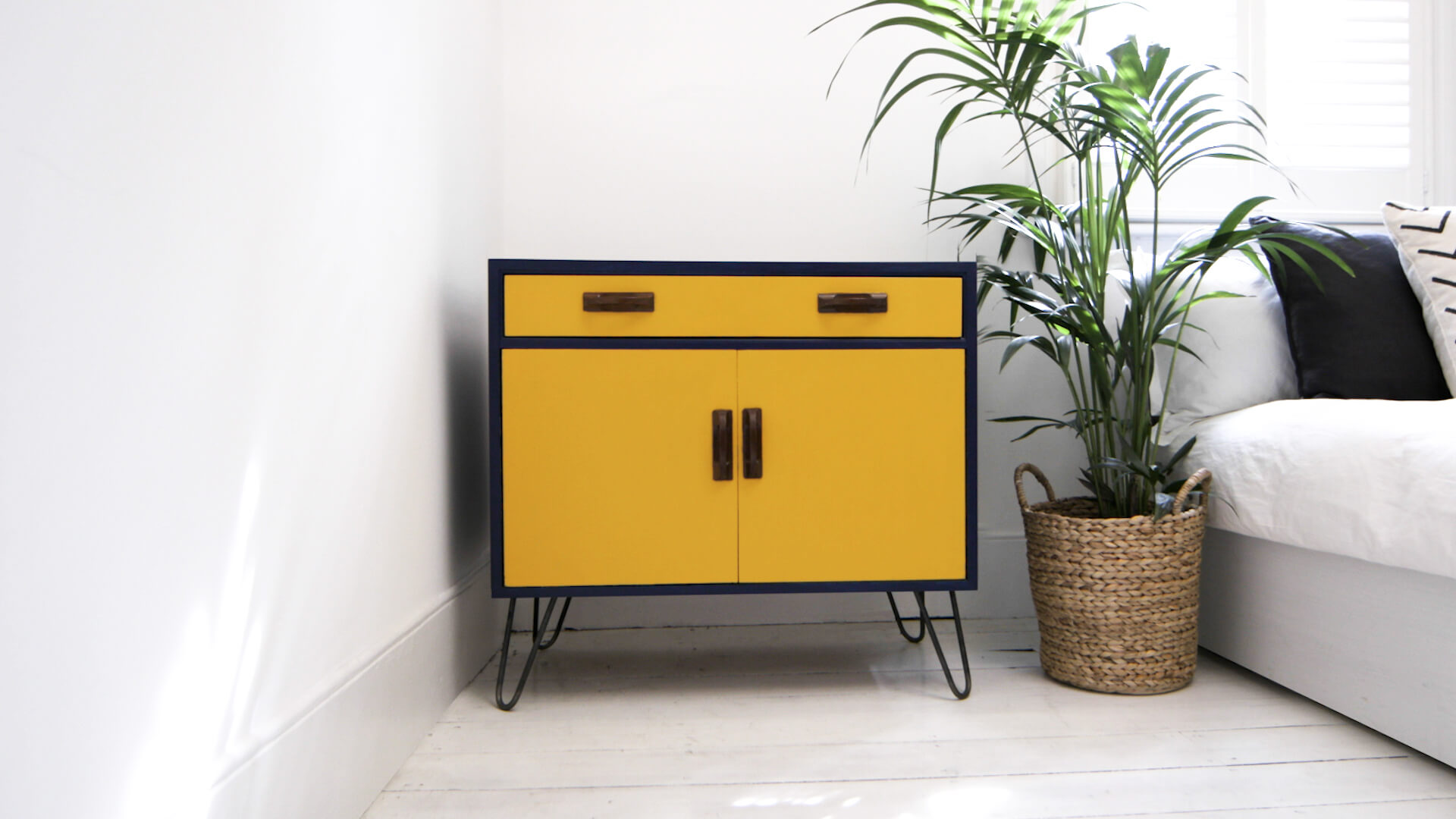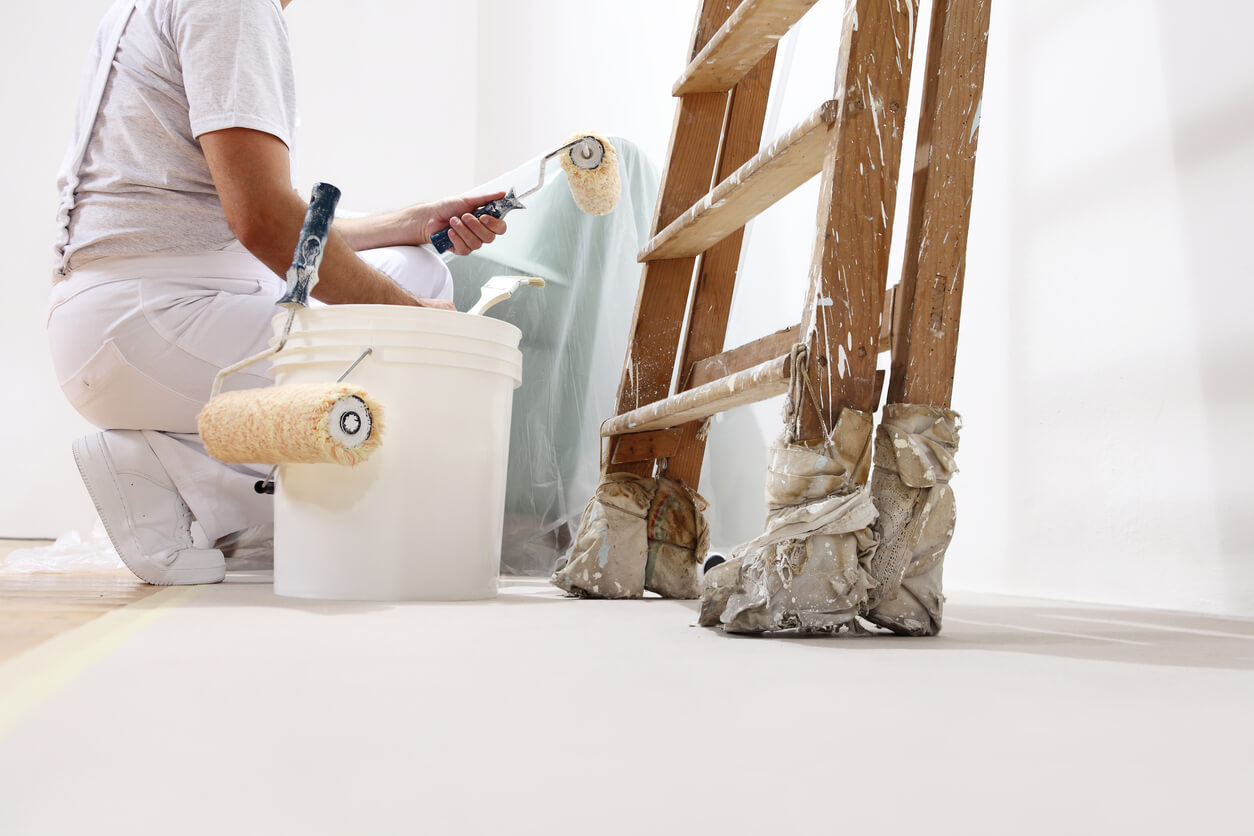
How to get paint out of different surfaces
Accidents and paint splashes – or spillages – happen. Fortunately, it’s easy enough to clean up water-based paint whether it’s dried or still wet.
So, whether you need to get paint out of your hair, carpet or remove it from wood, here's our ultimate guide to removing paint from different surfaces and textiles.
Water-based vs oil-based paint
Before we start, all this advice is for water-based paints. Almost all household paints are now water-based, which means that you mainly just need warm soapy water and elbow grease to remove the paint.
For oil-based paints, removing it often takes chemical paint stripper for the most effective results.
How to remove different types of paint
How to remove emulsion
When emulsion paint is still wet, all you need is some warm soapy water and a cloth to get it out.
When an emulsion is dry, that job becomes harder. Before you go on the hunt for paint stripper, remember that you can easily paint over dry emulsion and you don’t necessarily need to remove it.
But, if you want to strip back to the original surface and emphasise original features, there are a couple of different methods you can use.
Paint stripper
Paint stripper chemically removes multiple layers of emulsion paint. It should be applied thickly and always follow the instructions. Some strippers are designed specially for older paints, and others can only be used on certain materials, so make sure you choose the right stripper.
Just be aware that you need to rinse all the stripper off with soapy water before you start painting.
Heat gun
If you don’t want to use chemicals, a heat gun and flat-edged scraper can be effective but hard work. This helps to soften the paint and gently remove it and, like paint stripper, can remove several layers at once.
This method might damage the surface below though and requires careful scraping to get the paint off. If you do cause damage, sand the damaged area until it’s smooth and fill any chips or dents before painting over.
Don’t use a heat gun on any paint that was applied before the 1980s as it might contain traces of lead. When heated up, lead can be inhaled which is extremely dangerous.
How to remove gloss from skirting boards
When removing gloss from skirting boards, you have two options:
Paint stripper
This is most useful if you want to remove the paint and strip back to the original wood. If you use this method, you need to wash the surface with warm soapy water to make sure it’s completely clean and dry before painting.
Sanding
If you just want to use a new colour on your skirting boards, sand the gloss with 180 grit sandpaper to remove the sheen. Once you’ve done that, wipe it down, clean with sugar soap, and it’s ready for painting.
How to remove chalk paint
Chalk paint is most commonly found on furniture and is often water-based, making it relatively easy to remove.
If the chalk paint is covered in a layer of wax, use white spirit to remove the wax. This will likely also help to loosen the paint underneath the wax.
Then you just need to scrub with water and a sponge. You should slowly start to see the wood grain coming through.
Once you’ve removed as much of the paint as you can, use fine steel wool to get in between the wood grain and get rid of the last patches.
If you want to keep the appearance of the wood natural, sand down the surface and wipe down with white spirit. Then protect the grain and restore the natural colour with some wax.
How to remove different types of paint
How to remove paint from brick
Painted brick, if not done correctly, can cause problems with damp and prevent your house from breathing.
If the paint is still wet, a carefully controlled pressure washer or hose will help to clean up spillages on hard surfaces.
If the paint has dried, it can be much harder to remove. Masonry paint is designed to be tough and weather-resistant, taking a lot of work to remove. Brick is also porous and you might find that there are hints of colour which linger no matter how hard you scrub.
To get paint off brick, you need protective gear, a lot of heavy-duty paint stripper and paint peeling strips. Because of the scale of this job, we recommend calling a specialist to help. This will not only make your life a lot easier but will also ensure that no damaging chemicals leak into the ground.
How to get paint off concrete floors
Wet paint can be hosed down and diluted.
But dry paint is tougher to remove. First, clean the concrete with warm soapy water and use a stiff wire brush to scrub the surface. This should go some way to working loose the paint, but if it doesn’t budge, you’ll have to turn to paint stripper.
Apply a generous amount of paint stripper and leave it to do its work, follow the instructions and scrub and hose it away.
How to get paint off glass
It’s best to let paint dry on glass first; otherwise, you’ll have a smudgy mess. You can either scrape it off or use white spirit to remove it.
If you scrape it off, use a sharp tool and be very very careful. It’s best to scrape it away in small batches to ensure you don’t scratch the glass.
If you’re using white spirit, use a cloth and rub the paint in circles. Once you remove all the paint, clean the glass and you shouldn’t have any streaks.
How to get paint off hardwood floors
For wet paint, gently dab at the area first to get it all off the floor. Wipe up smudges with warm soapy water.
If the paint has dried, use some warm soapy water and scrub at the paint. This should soften it and help it come up easily, then use a flat-edged scraper to get rid of the paint.
How to get paint off laminate floor
Laminate flooring is reinforced with special chemicals that help to toughen it up, so it’s resistant to damage. That being said, it can still scratch if you’re not careful.
To get paint off laminate floor use warm soapy water and fine steel wool. Gently scrub at the paint until it lifts off the surface.
How to remove paint from metal
Paint stripper is the easiest way to remove paint from metal. Make sure you choose a paint stripper that’s designed specially for metal and follow the instructions.
If you want to use a stripping method that doesn’t involve harsh chemicals, hot soapy water can work wonders. Soak the metal for a while and use a stiff-bristled brush to scrape away the paint.
Baking soda is also naturally effective. Mix it with water and completely submerge the metal. Leave it to soak for half an hour and take it out the water. Use a wire brush to remove the paint; it should come away really easily. Because you’ve removed the protective paint coating, make sure you thoroughly dry the metal otherwise it will start to rust.
How to remove paint from plaster
Plaster is easy to paint over.
However if you’ve just painted a wall and have ended up with splashes of different colour paint on it (it happens to the best of us), you’ll want to fix that.
To remove small splashes of paint, lightly sand the area and paint over.
If you want to strip the plaster and remove layers of built-up paint altogether, use an appropriate paint stripper. Follow the instructions and be left with a smooth surface.
How to remove paint from plastic
There are a few different ways you can remove paint from plastic.
Warm soapy water is the best place to start. Soak a dishcloth and rub at the paint until it starts to come away.
If warm water doesn’t work, use cooking oil. Olive or vegetable oil helps to soften the paint, making it easier to remove. All you need to do is use a cloth to apply the oil, working it into the paint and leaving it to sit for a while. Keep rubbing and wiping at the paint until it’s gone.
If the paint on the plastic is a thin and freshly dried layer, it should easily scratch or scrape off. Even if it’s not newly dried, use a flat-edged scraper to remove the paint gently.
How to get paint off tiles
Small splashes of paint can be gently scraped off tiles with a flat and blunt tool.
For larger areas of paint (for instance if someone has painted over the tiles), use a suitable paint stripper. The type you use may depend on the material of your tiles, so do your research to make sure you find the right one.
How to get paint off uPVC
The first place to start with getting paint off uPVC is to try and scrape it away. Do this gently or you run the risk of scratching the uPVC.
If that doesn’t work, try rubbing olive oil into the paint and leaving it to sit for a few minutes. This should help to soften the paint, making it easier to scrape off.
For really stubborn paint, try nail varnish remover. Use a cloth to apply it to the paint and leave it to soak for a while. Then use a scouring pad to rub away the paint.
How to get paint off wallpaper
Removing paint from wallpaper has several different hazards that can leave it damaged. Depending on how much paint is on the wallpaper, it might just be easier to replace that section of the paper.
But if you’re intent on trying to remove the paint first, then here are some methods you can try.
If the paint is a blob, use a fine razor blade to get underneath it and lift the paint off the wallpaper. Be extremely careful here; otherwise, you could very easily cut the wallpaper.
Rubbing alcohol (isopropyl alcohol) is the next option. Damp a cloth and gently dab at a hidden patch of wallpaper to test it first. If the patch test is fine, use the cloth to rub at the paint lightly. The alcohol shouldn’t wet the wallpaper too much and it shouldn’t start to lift or peel away from the wall. Once you’ve let the alcohol sit for a while, use a damp sponge to dap at the paint lightly. It should start to come away with the sponge.

How to get paint out of different textiles
How to get paint off carpet
Water-based paint is easy to remove, so don’t worry if it’s made its way into your carpet! If the paint is still wet, dab at it gently with a cloth to soak it up.
If the paint has dried, use a small and concentrated amount of carpet cleaner to soften it. Then use a sharp-edged instrument to scrape out the paint.
How to get paint out of clothes
Got paint on your clothes? No problem, water-based paints are simple to wash out.
Use a cotton bud to get rid of wet paint, gently dabbing at it and being careful that it doesn’t spread.
For dry paint, scrape off the excess with a blunt-edged tool. The rest of the paint should come out in the wash.
How to get paint out of hair
Small paint splashes in your hair are unavoidable, especially if you’re using a roller. The key to getting it out is soaking your hair and using a fine-tooth comb to untangle knots and remove the paint.
If it’s proving more stubborn, you might have to go to a hairdresser!
How to get paint off of leather
Leather is susceptible to discolouring meaning you have to be careful with how you treat it. Olive oil can lift stains and helps to soften the leather at the same time.
Soak a cotton wool bud in olive oil and apply it to the paint. Leave it to soak for a few minutes and then using a blunt knife, gently scrape the dried paint away.
If olive oil doesn’t work, use warm soapy water and a sponge with a scrubbing pad. Keep working and scrubbing until the paint starts to lift and peel.


